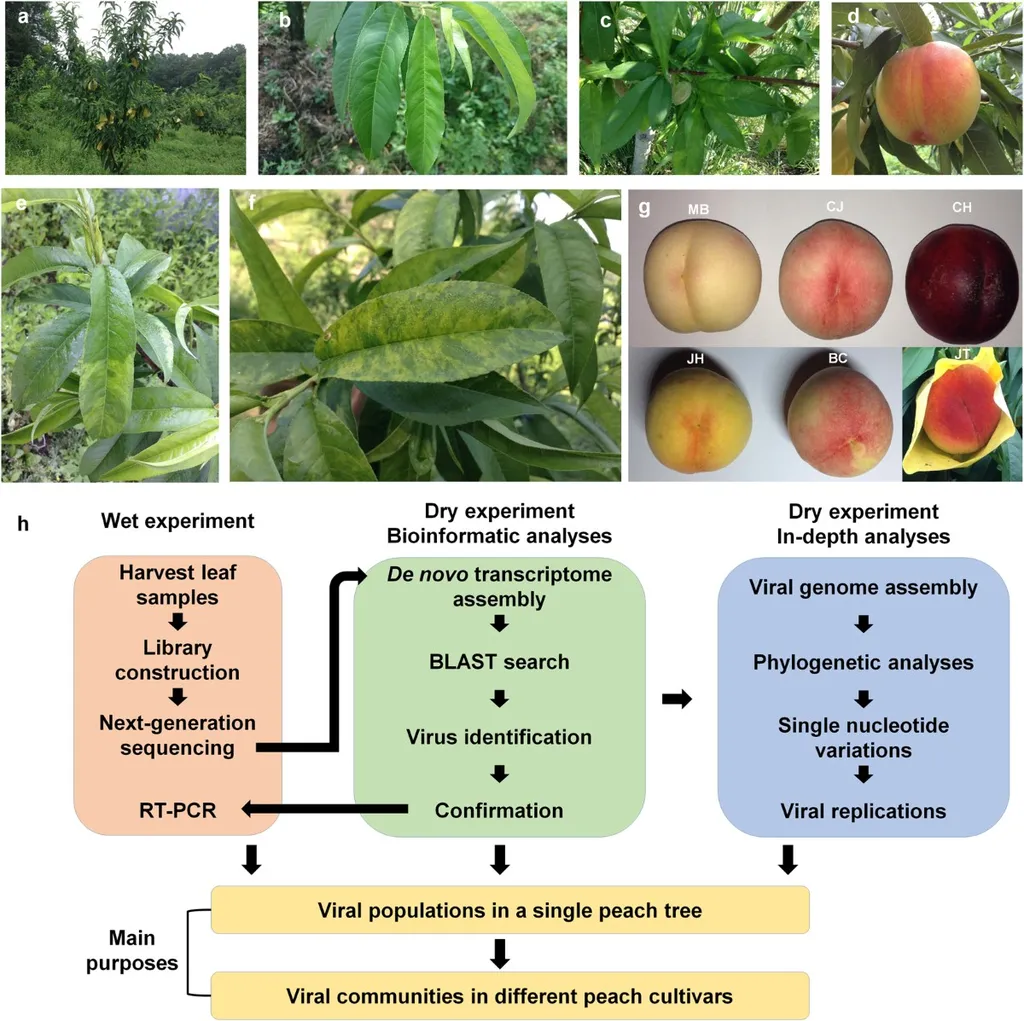In a significant stride towards safeguarding fruit tree crops, researchers have developed a rapid and precise diagnostic tool for detecting and quantifying three devastating viruses. The study, led by Na Hee Kim from the Department of Agricultural Biotechnology at Seoul National University, introduces a TaqMan-based real-time reverse transcription quantitative PCR (RT-qPCR) assay capable of identifying blackberry chlorotic ringspot virus (BCRV), blueberry shock virus (BlShV), and plum pox virus (PPV) in fruit tree seedlings.
The assay, detailed in a recent publication in *The Plant Pathology Journal* (translated to English as “The Journal of Plant Pathology”), offers an efficient and sensitive method for virus detection, with limits as low as 40 copies for BCRV and PPV, and 500 copies for BlShV. “This level of sensitivity is crucial for early detection and prevention of virus spread, particularly in quarantine stations where leaf tissue may not always be available,” Kim explained.
The research team designed two primer–probe sets for each virus, ensuring amplification efficiencies between 90–110%. The assay’s high specificity was confirmed against other viruses or viroids affecting the same host plants, minimizing the risk of false positives. Moreover, the use of FAM and Cy5 fluorescent dyes enabled multiplex detection of all three viruses simultaneously, streamlining the diagnostic process.
One of the most notable aspects of this assay is its robustness. It maintains high efficiency and sensitivity even with varying amounts of RNA extracted from woody branches of the host plant. This feature is particularly valuable for commercial orchards and nurseries, where rapid and accurate diagnosis can prevent significant economic losses.
The implications of this research extend beyond immediate diagnostic applications. As Kim noted, “This assay will be useful for rapid and accurate diagnosis of plant virus diseases, especially in quarantine stations where leaf tissue is often unavailable upon import.” The ability to quickly and accurately identify viral infections can enhance biosecurity measures, protect commercial crops, and facilitate international trade.
The development of this multiplex qPCR assay represents a significant advancement in the field of plant pathology. By providing a reliable tool for the detection and quantification of multiple viruses, it paves the way for more effective disease management strategies. As the global demand for fruit continues to grow, the need for such innovative solutions becomes increasingly critical.
This research not only highlights the importance of advanced diagnostic tools but also underscores the potential for further advancements in the field. Future developments may include the integration of this assay into automated systems for large-scale screening, further enhancing its utility in commercial and regulatory settings. As the agricultural industry continues to evolve, the role of cutting-edge technology in ensuring food security and economic stability cannot be overstated.

